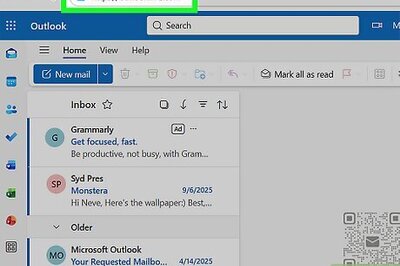
views
Notches are becoming an increasingly common in Android phones. As the new launches roll in, this will become something akin to a permanent fixture. The idea of a display cut out at the top divides opinion. A lot of phone makers give users the option of scaling the display in such a way that the notch gets hidden. On the other hand, there seemed to be a school of thought that multiple notches on the same screen could perhaps be the next big thing for smartphones. Google has effectively drawn the boundary, before phone makers tried something outlandish and unnecessary. And the new rules make perfect sense.
The new Google guidelines state that while phone manufacturers are free to have two notches on their phone screens if they wish to, but one cutout has to be at the top and one cutout has to be at the bottom. Any aspirations to put three notches have been nipped in the bud. To be honest, we still haven’t seen phones with three or four notches, but this has sorted out that matter even before it became an issue. At present, Android is on 16 different phone models with notches, made by 11 different manufacturers. That number is expected to increase considerably in the next 12 months.
A notch is essentially a cut-out, at the top, of a part of the screen display. Its advantage: It offers the ability to retain the display space on either side of it, for information such as date, battery statistics and more, and for apps. “Our research has shown that the space occupied by the notch typically goes unused in standard use. The notch makes optimal use of the vacated space,” said Pete Lau, CEO at OnePlus, while explaining the rationale behind the notched display on the OnePlus 6.
The idea is that if the notches in Android phones are positioned at a similar location, the app usage experience will remain consistent as well.
Google is taking this notch thing seriously, and perhaps even ahead of time, but we appreciate that. Rather than this sounding unnecessary or pre-emptive, we feel that Google’s guidelines for uniformity would make for a generally better smartphone and app usage experience. For one, the consistency while using apps will be similar from phone to phone. Secondly, one notch at the top and one notch at the bottom in a phone makes it simpler for app developers to design their apps and games. If for instance there are two notches at the top, design issues aside, app developers will have a torrid time defining what data should show where, with the notches in mind. Secondly, phone makers could very well go a bit over the top, and what we could end up with are silly looking smartphones.
We do feel that by limiting the scope of notches to the top and the bottom of the screen, Google has perhaps missed a trick in the battle with the Apple iPhone. If there were to be notches on the sides of the display, for instance, that could have been used as a visual and experience based distinguishing factor. But Google is prioritizing consistency of the user experience over visual appeal, and that can’t be a bad thing.
It can however take a really bold phone maker to completely ignore Google’s guidelines about the notch, and do as it pleases. But for that, it’ll have to give up the advantages of installing the Google Services and the Google Play Store on the devices it makes. It’ll be brave and risky, but that’s not to say it cannot be done.
These guidelines come ahead of the release of Android P, which will add enhanced support for the notch in smartphone displays and manage the data around that. It is also perhaps a reaction to the fragmentation problems with Google otherwise has consistently faced with Android over the years. This is a smart move, to control how apps may look on different Android phones with different types of notches. While Android will never be totally under Google’s control once it is installed on phones made by others, the way Apple controls the hardware and iOS, but some amount of similarity across the board will surely make things better.
Also read: Fortnite Bypassing Google Play Store is a Good And Bad Thing













Comments
0 comment